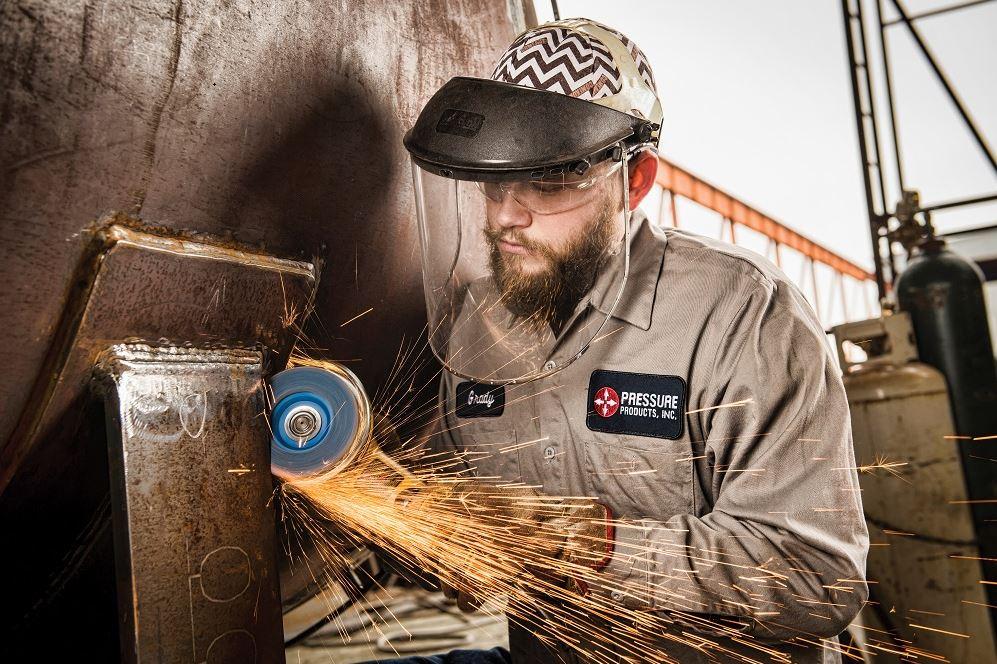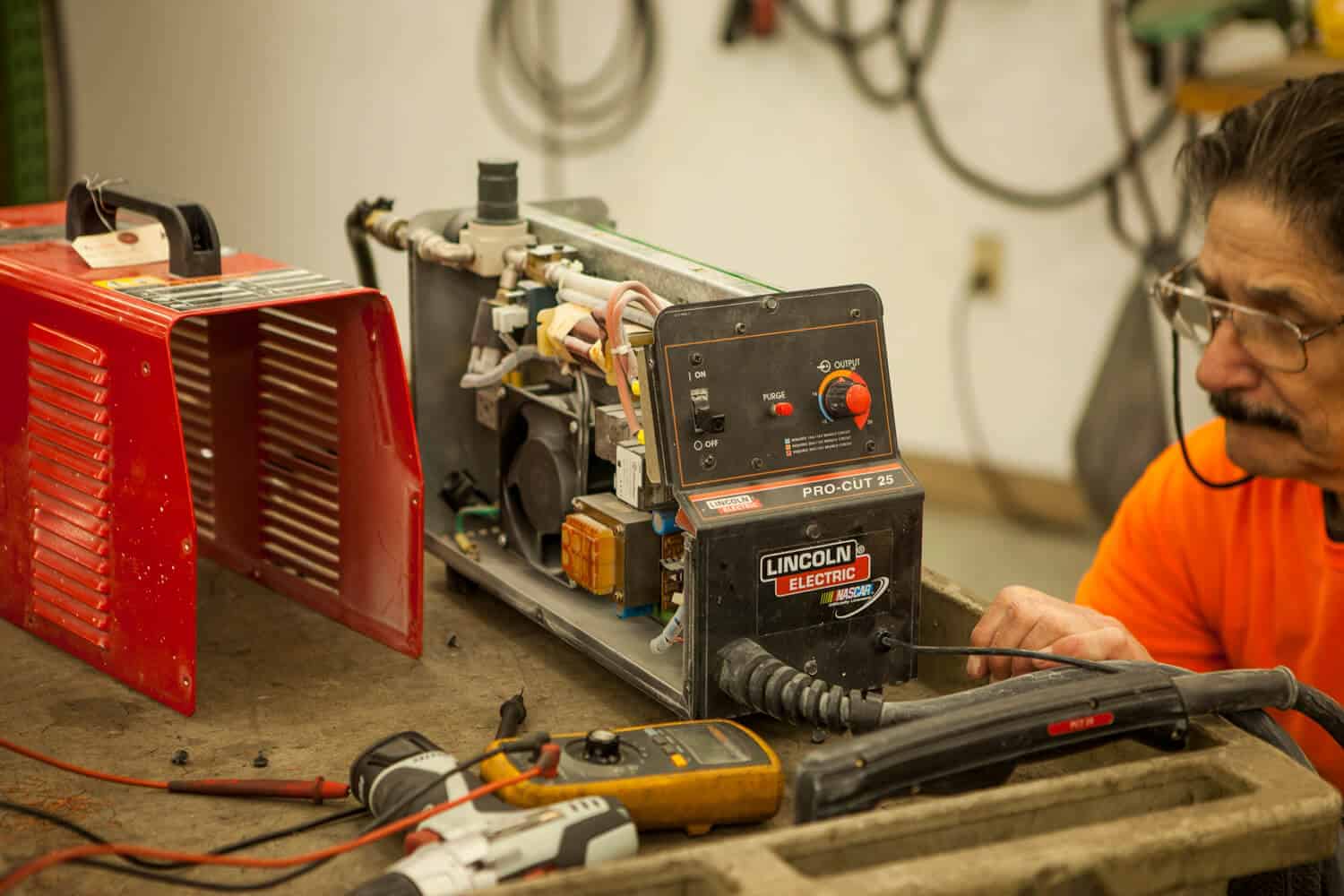Typical Welding Repair Work Issues and How to Address Them Successfully
Welding repair services usually encounter a range of problems that can jeopardize the honesty of the final product. Typical problems include inadequate penetration, porosity, and misalignment, amongst others. Each defect provides one-of-a-kind difficulties that require specific techniques for resolution. Recognizing these issues is crucial for welders aiming to enhance their abilities and end results. This discussion will check out these common welding repair service issues and efficient approaches to resolve them.
Poor Penetration
Inadequate penetration occurs when the weld steel falls short to completely fuse with the base product, leading to weak joints and prospective architectural failings. This issue often comes from not enough warmth input, wrong electrode angle, or improper welding speed. Welders may experience insufficient penetration because of a mistake of the necessary criteria for a details material density or type. Furthermore, contamination on the base material's surface can impede effective bonding, aggravating the issue. To attend to poor penetration, welders must guarantee proper settings on their equipment and preserve a tidy job surface area. Regular assessment of welds is suggested to identify any type of shortages early, enabling timely improvements and the avoidance of endangered structural integrity in welded settings up.
Porosity
Porosity is an usual problem in bonded joints that materializes as little gas bubbles caught within the weld metal. This flaw can compromise the integrity of the weld, causing minimized stamina and prospective failing under stress. Montana Mobile Welding and Repair Belgrade. Porosity generally emerges from contamination, wetness, or inappropriate welding techniques, which enable gases to escape into the molten weld pool. To resolve porosity, welders need to ensure correct surface preparation, maintain a clean workplace, and make use of suitable welding parameters. In addition, selecting the right filler material and shielding gas can minimize gas entrapment. Routine assessment and screening of welds can help recognize porosity early, assuring timely rehabilitative activities are taken, therefore protecting the high quality and integrity of the bonded structure
Imbalance
Misalignment in welding can emerge from different aspects, including incorrect arrangement and thermal development. Understanding the source is important for effective resolution. A number of improvement techniques are available to straighten components and guarantee structural integrity.
Reasons for Imbalance
Welding imbalance typically stems from a variety of underlying concerns that can jeopardize architectural integrity. One key reason is improper fit-up of parts prior to welding, which can bring about voids and irregular surfaces. Variants in thermal expansion during the welding procedure can also cause distortion, particularly if the materials being signed up with have different coefficients of development. Furthermore, poor fixturing and securing might fail to hold components firmly in location, resulting in movement during welding. Poorly maintained devices, including welding machines and devices, may present variances in the weld bead, more contributing to misalignment. Ultimately, driver mistake, coming from inadequate training or experience, can additionally play a considerable role in creating misaligned welds.
Modification Techniques Readily Available
Attending to misalignment properly calls for a combination of corrective methods tailored to the certain issues handy. One typical approach is making use of jigs or components to hold parts in the appropriate placement during welding, making sure regular alignment. Additionally, preheating the products can assist decrease distortion and improve fit-up. For considerable imbalance, mechanical realignment techniques, such as using hydraulic jacks or clamps, can be used to fix the position before welding. Post-weld heat therapy may likewise be required to alleviate tensions brought on by imbalance. Finally, cautious assessment and change throughout the setup stage can avoid misalignment concerns from becoming substantial troubles, promoting a smoother welding process and boosting general architectural honesty.
Distortion
Distortion is a common difficulty in welding that can emerge from various variables, consisting of irregular cooling and heating. Understanding the reasons for distortion is essential for executing effective avoidance strategies. Addressing this issue not just boosts structural stability but likewise enhances the total top quality of the weld.
Sources of Distortion
When subjected to the intense warmth of welding, products typically go through adjustments that can bring about distortion. This phenomenon mainly develops from thermal development and tightening during the welding process. As the weld area warms up, the material expands; upon cooling, it contracts, which can develop internal anxieties. In addition, irregular heating across a workpiece can worsen these stress and anxieties, causing warping or flexing. The kind of material additionally plays a significant function; metals with varying thermal conductivity and coefficients of growth might respond in a different way, resulting in unpredictable distortions. Bad joint design and insufficient fixturing can add to misalignment throughout welding, enhancing the likelihood of distortion. Recognizing these reasons is necessary for efficient welding repair work and prevention methods.
Avoidance Techniques
Efficient prevention methods for distortion during welding focus on regulating warmth input and making certain appropriate joint style. Keeping a regular warm input aids to minimize thermal development and tightening, which can cause distortion. Using strategies such as pre-heating the work surface can likewise lower the temperature slope, advertising consistent heating. Furthermore, choosing ideal joint styles, such as T-joints or lap joints, can boost stability and minimize tension focus. Applying appropriate fixturing to safeguard the work surfaces in place additionally aids in preserving placement during the welding procedure. Staggered welding sequences can distribute warmth more equally, preventing localized distortion. By applying these strategies, welders can considerably decrease the chance of distortion and boost the general top quality of their welds.
Splitting
Cracking is an usual issue experienced in welding fixings, commonly arising from numerous variables such as inappropriate air conditioning rates, product choice, or poor joint preparation. The occurrence of fractures can substantially compromise the integrity of the weld, leading to potential failings during operation. To resolve this problem, welders must initially evaluate the origin More Bonuses creates, making certain that materials work and suitably selected for the particular application. In addition, regulating the cooling price during the welding process is crucial; rapid air conditioning can cause tension and cause breaking. Correct joint design and preparation also add to reducing the danger. Executing these strategies can improve weld high quality and durability, eventually minimizing the likelihood of splitting in finished weldments.

Incomplete Fusion
A substantial issue in welding repairs is insufficient combination, which takes place when the weld metal does not appropriately bond with the base material or previous weld passes - Montana Mobile Welding and Repair Belgrade. This defect can bring about weak points in the joint, potentially endangering the stability of the bonded framework. Factors adding to incomplete combination include insufficient warm input, incorrect welding strategy, and contamination of the surfaces being joined. To resolve this issue successfully, welders need to guarantee correct pre-weld cleaning and surface area prep work, in addition to adjust their welding criteria to accomplish appropriate infiltration and blend. Routine evaluation during the welding process can likewise assist recognize insufficient combination early, enabling timely rehabilitative actions to boost the total high quality of the weld
Overheating
While welding repair work can improve architectural integrity, overheating provides a substantial challenge that can cause product degradation. Too much warm throughout welding can alter the mechanical homes of steels, causing reduced toughness, increased brittleness, and warping. This phenomenon is especially critical in high-stress applications where structural integrity is extremely important. Determining overheating can involve visual examinations for discoloration or distortion, as well as monitoring temperature during the welding process. To mitigate the risks related to overheating, welders must utilize suitable methods, such as managing warmth input, readjusting travel rate, and utilizing appropriate filler materials. Additionally, applying pre- and post-weld warmth therapies can help bring back product properties and enhance the general high quality of the repair, ensuring long-lasting performance and security.
Regularly Asked Questions
What Are the Common Indicators of a Welding Issue?

How Can I Test My Welds for High quality?
To check welds for high quality, one can use aesthetic evaluations, ultrasonic screening, and radiographic methods. Each technique guarantees structural stability, recognizes issues, and validates adherence to defined criteria, ultimately improving the dependability of the welded joints.
What Safety Preventative Measures Should I Take While Welding?
When welding, one need to prioritize safety by wearing suitable individual safety devices, making sure proper air flow, securing combustible products away, maintaining a clean work area, and understanding environments to avoid crashes and injuries.
Can I Fix a Weld Without Remodeling the Entire Joint?
Repairing a weld without renovating the whole joint is feasible, depending on the damages (Montana Mobile Welding and Repair Belgrade). Techniques such as grinding, including filler material, or making use of a welding process can efficiently deal with specific problems while lanthanated tungsten preserving the bordering structure
What Equipment Are Necessary for Reliable Welding Repairs?
Necessary devices for efficient welding repair work consist of a welding machine, cable brush, grinder, safety gear, clamps, and filler products. Each tool plays a vital function in making certain top quality and safety and security during the fixing procedure. Porosity usually develops from contamination, wetness, or improper click for more welding techniques, which allow gases to escape right into the molten weld swimming pool. Inadequately maintained tools, including welding equipments and tools, might introduce incongruities in the weld grain, additional adding to imbalance. When subjected to the intense warmth of welding, materials usually undergo adjustments that can lead to distortion. Cracking is a typical issue come across in welding fixings, frequently resulting from different factors such as incorrect air conditioning rates, product option, or poor joint prep work. A significant issue in welding repairs is insufficient blend, which happens when the weld steel does not properly bond with the base material or previous weld passes.